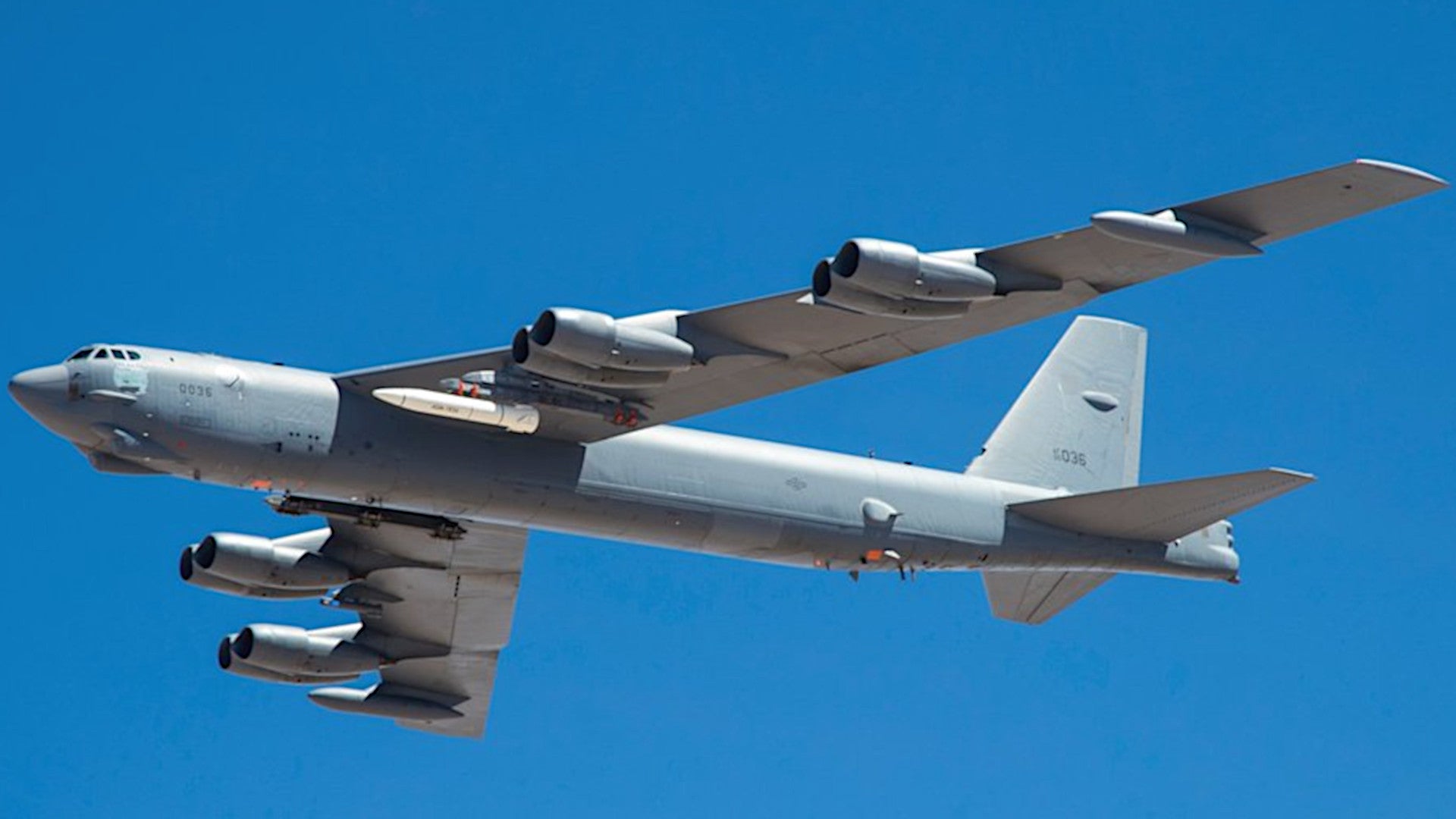The U.S. Air Force has released pictures of a B-52 bomber carrying a “sensor-only” prototype of the AGM-183A Air-launched Rapid Response Weapon, or ARRW. The service had announced the first captive-carry test of this new weapon last week.
The photographs, seen below, show that a B-52H, with the serial number 60-0036, carried the AGM-183A aloft during the test on June 12, 2019. This bomber is assigned to the 419th Flight Test Squadron at Edwards Air Force Base.
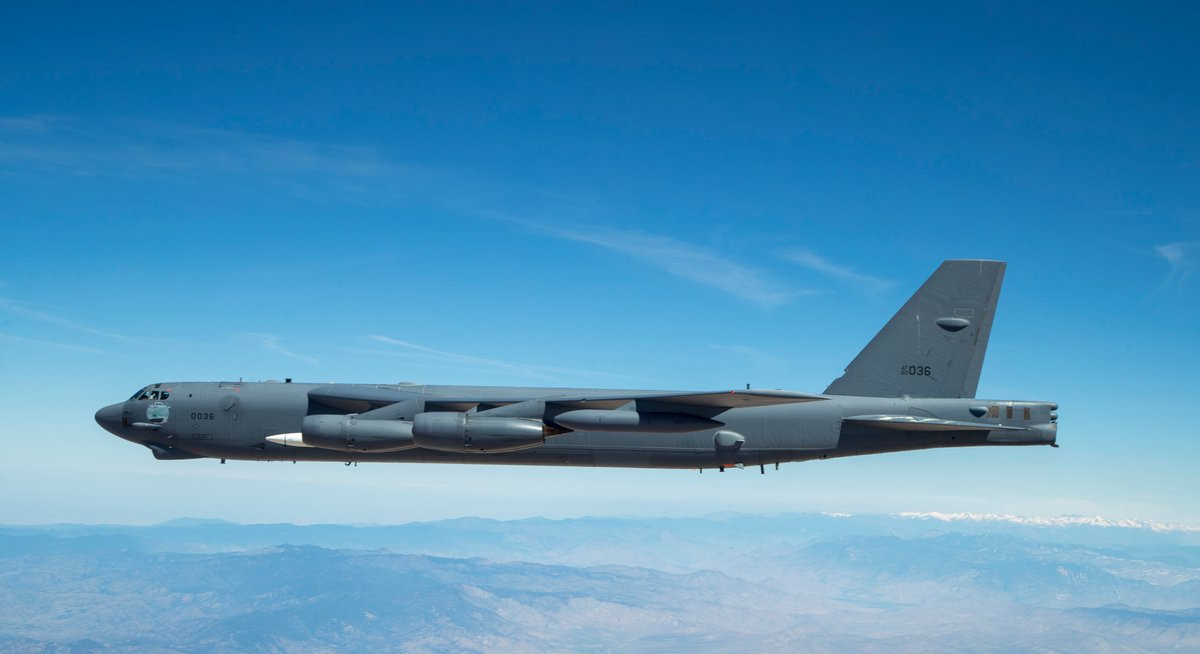
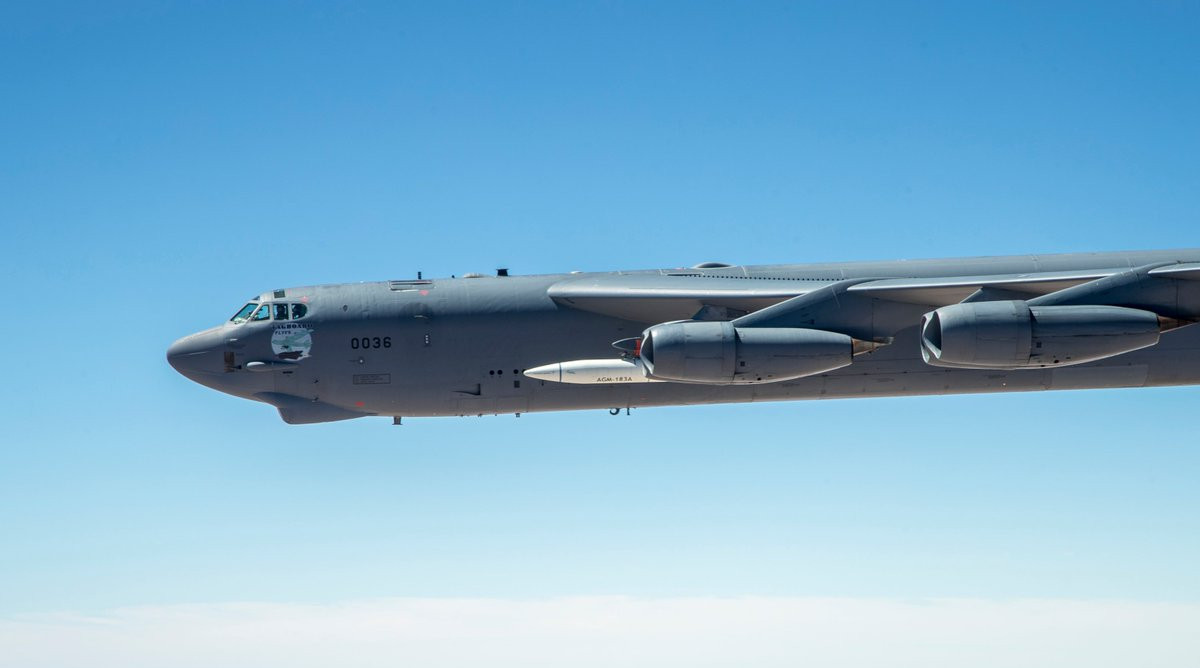
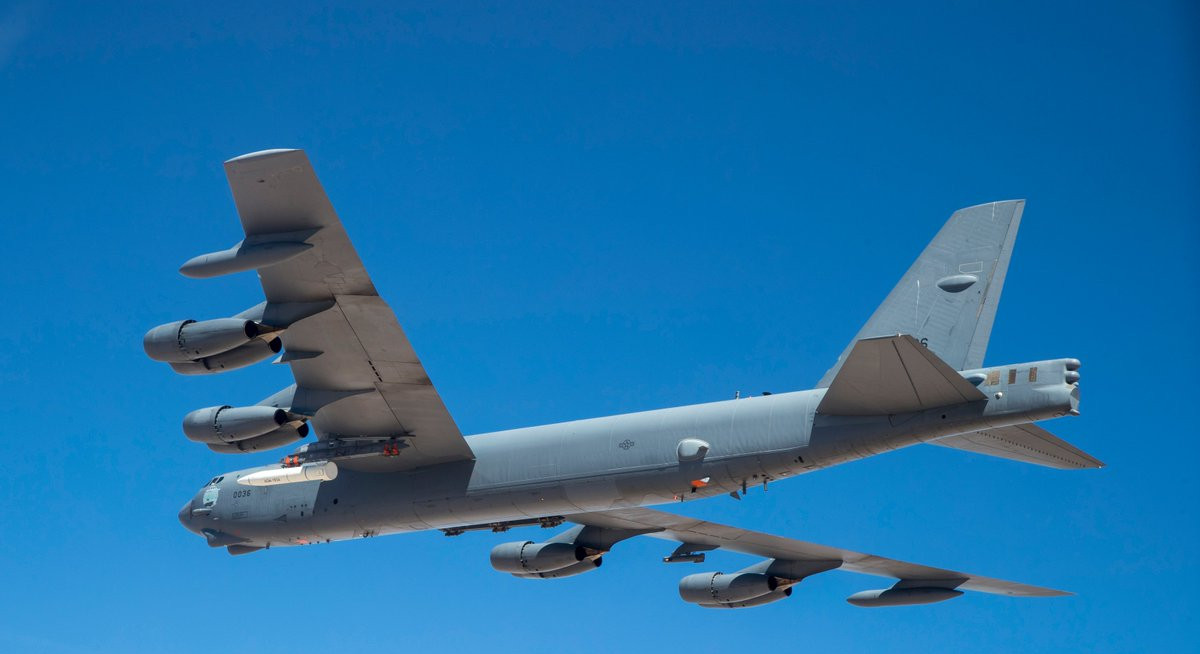
This first flight test, which you can read about in a very recent article of ours here, was simply to collect data on the drag and vibrations a B-52 would experience while carrying the weapon. The Air Force plans to continue ground and flight testing of the ARRW over the next three years, according to a statement from Lockheed Martin, which is the prime contractor.
At the heart of the AGM-183A is an unpowered hypersonic boost-glide vehicle, but that will be fully contained inside the nose of the missile until the rocket booster propels it to the appropriate speed and altitude. So, the pictures we have now give us the first look at the external size and shape of the complete weapon, including what appear to be pop-out fins at the rear of the booster.
The B-52H is carrying the missile under its wing on what appears to be a modified Improved Common Pylon (ICP). The overall length of the weapon seems to suggest it might be possible for the bomber to carry two AGM-183As under each wing. For this configuration to work, the weapon would have to fall away from the bomber first like a bomb before the rocket ignites.
The Air Force has also expressed an interest in a new Heavy Release Capability (HRC) pylon, each of which can carry two 20,000-pound class weapons, which could also be an indication that the service is looking at this to be the full AGM-183A loadout for the B-52. A bomber carrying four ARRW would offer impressive stand-off strike capability.
As I wrote when the Air Force first announced the AGM-183A test:
“In general, the sheer speed, as well as the level atmospheric flight profile and ability to maneuverable in unpredictable ways, makes hypersonic weapons ideally suited to penetrating past enemy defenses to perform short- or no-notice strikes against time-critical and other strategic targets. Especially compared to traditional ballistic missiles, which follow more predictable flight paths, hypersonic weapons are extremely difficult to spot, let alone intercept, making it very hard, if not impossible, for defenders to either shield themselves or relocate important assets.
“This speed and extreme stand-off range also makes hypersonic weapons very applicable to non-stealthy platforms, such as the B-52, which might otherwise have an increasingly hard time penetrating enemy air defense networks. “
This particular B-52 also underscores the unique capabilities of the aircraft to lift particularly large and outsized payloads, such as the AGM-183A. 60-0036 carries the nickname “Tagboard Flyer,” which is a reference to the now-declassified Lockheed D-21 long-range intelligence gathering-drone, the existence of which only began to emerge in the 1980s. You can read more about this unmanned aircraft and discussions about possibly turning it into pilotless “bomber” in this past War Zone feature.
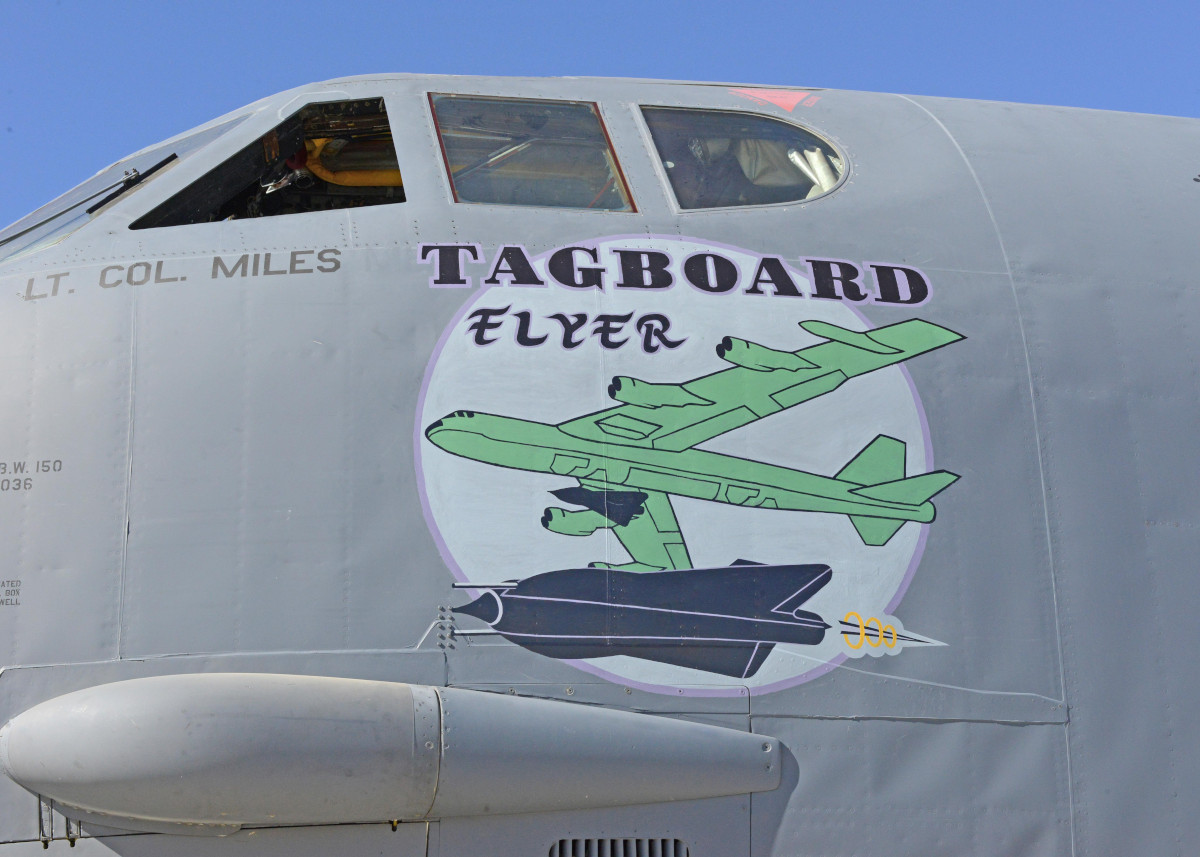
This test of ARRW is only the first of what will be many flight tests and we will hopefully get to see more of the weapon on the ground and under the wings of B-52s—and maybe even the hypersonic vehicle itself—in the coming months.
Contact the author: joe@thedrive.com
